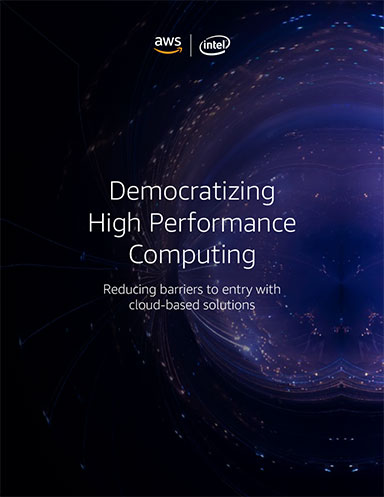Hewlett Packard Enterprise Delivers 2nd Exascale Supercomputer to Argonne National Lab
This supercomputer is one of two HPE Cray EX supercomputers to exceed an exaflop, HPE says. Aurora is reportedly
Latest News
May 13, 2024
Hewlett Packard Enterprise (HPE) has delivered its second exascale supercomputer, Aurora, in collaboration with Intel for the U.S. Department of Energy’s Argonne National Laboratory. Aurora has reached 1.012 exaflops on 87% of the system, reportedly making it one of the world's fastest supercomputers as verified by the TOP500 list of the most powerful supercomputers. Aurora is not only the company’s second exascale system, but also one of the largest artificial intelligence-capable system in the world, achieving 10.6 exaflops on 89% of the system.
“We are honored to celebrate another significant milestone in exascale with Aurora, which delivers massive compute capabilities to make breakthrough scientific discoveries and help solve the world’s toughest problems,” says Trish Damkroger, senior vice president and general manager, high-performance computing and artificial intelligence Infrastructure Solutions at HPE. “We are proud of the strong partnership with the U.S. Department of Energy, Argonne National Laboratory, and Intel to realize a system of this scale and magnitude that was made possible through our joint innovative engineering, multiple teams, and most importantly, shared value of delivering state-of-the-art technology to fuel science and benefit humankind.”
Aurora is built with the HPE Cray EX supercomputer, which is purpose-built to support the scale of exascale. The system is also reportedly one of the largest deployment of open, Ethernet-based supercomputing interconnect—HPE Slingshot—on a single system. This fabric connects Aurora’s 75,000 compute node endpoints and 2,400 storage and service network endpoints along with 5,600 switches to boost performance by enabling high-speed networking across Aurora’s 10,624 compute blades, 21,248 Intel® Xeon® CPU Max Series processors and 63,744 Intel® Data Center GPU Max units, making it one of the world’s largest GPU clusters.
Planned as an AI-capable system from inception, researchers will be able to use generative AI models on Aurora to accelerate scientific discovery. Early AI-driven research that scientists have run on Aurora include brain mapping to better understand the human brain’s 80 billion neurons, high energy particle physics enhanced by deep learning, and machine-learning accelerated drug design and discovery, among others.
“Aurora is a first-of-its-kind supercomputer and we expect it to be a gamechanger for researchers,” says Rick Stevens, associate laboratory director and distinguished fellow at Argonne National Laboratory. “Reaching this milestone with a second exascale system in the U.S. is an incredibly significant achievement that will advance open science initiatives globally.”
The Aurora exascale supercomputer is the result of a private-public partnership between HPE, Intel, the U.S. Department of Energy, and Argonne National Laboratory.
“The Aurora supercomputer was designed to support the research and science communities within the HPC and AI space,” says Ogi Brkic, Intel vice president and general manager, Data Center AI Solutions. “Our ongoing collaboration with Argonne National Laboratory and HPE has resulted in promising early science success stories. And we’re excited to see what’s to come as we continue to optimize system performance to accelerate the science and march toward what is next.”
Aurora has achieved exascale on a partial run of the system, tapping 9,234 of the total nodes. Aurora is an open science system housed at the Argonne Leadership Computing Facility (ALCF), a part of the U.S. Department of Energy’s Office of Science user facility.
Sources: Press materials received from the company and additional information gleaned from the company’s website.
More Hewlett Packard Enterprise Coverage
Subscribe to our FREE magazine, FREE email newsletters or both!
Latest News
About the Author
DE’s editors contribute news and new product announcements to Digital Engineering.
Press releases may be sent to them via DE-Editors@digitaleng.news.






